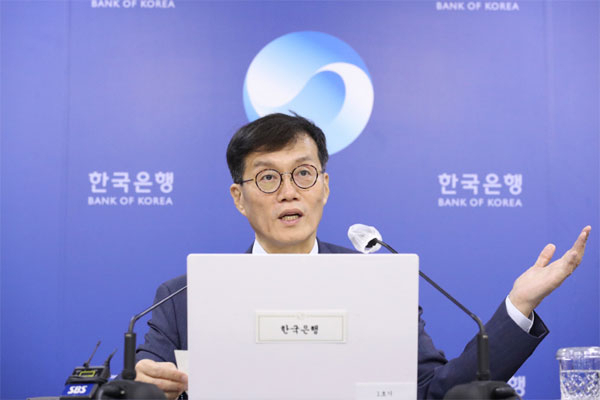
<Rhee Chang-yong, Governor of the Bank of Korea>
In the first quarter of 2025, stablecoin transactions in South Korea’s major crypto exchanges reached approximately 57 trillion KRW, drawing renewed attention to the rapidly expanding digital asset market. According to data collected by the Bank of Korea from the country’s five major exchanges—Upbit, Bithumb, Korbit, Coinone, and Gopax—the total transaction volume of stablecoins during this period amounted to 56.95 trillion KRW. This marks the first time such specific figures have been publicly disclosed.
Tether (USDT) accounted for the lion’s share, with 83.1% of the total volume, equaling roughly 47.3 trillion KRW. It was followed by USD Coin (USDC), which represented 16.9% or around 9.6 trillion KRW. The domestic stablecoin USD Sky (USDS), by contrast, accounted for just 4.1 billion KRW—only 0.01% of the total.
Stablecoin transaction volumes have surged since late last year. From 17 trillion KRW in Q3 2023, the figure skyrocketed to over 60 trillion KRW in Q4. This dramatic rise has been attributed largely to the global momentum following Donald Trump’s victory in the 2024 U.S. presidential election, where he campaigned on a strong pro-crypto platform. Optimism surrounding the industry has fueled domestic investor interest, sustaining high volumes into Q1 2025.
Despite this surge, South Korea’s regulatory framework for stablecoins remains underdeveloped. Notably, the discussion around issuing KRW-backed stablecoins has been cautious. Bank of Korea Governor Rhee Chang-yong recently expressed concern over allowing non-banking institutions to issue won-based stablecoins, citing the potential for regulatory arbitrage and financial instability.
In response, the Financial Services Commission (FSC) is currently drafting standards for the issuance, collateral management, and internal controls for stablecoins, intending to include these provisions in the second-phase revision of the Digital Asset User Protection Act set for later this year.
Stablecoins are increasingly central to the digital finance ecosystem, not only as trading currencies but also as foundational infrastructure for blockchain-based financial services. However, this growing significance comes with heightened risk. As South Korea’s stablecoin market expands at breakneck speed, the development of an effective and forward-looking regulatory regime has become more urgent than ever.


![[November]Uptober No More](https://coinhubkorea.com/wp-content/uploads/2025/10/Whisk_d78880efb01a730907f4be201effefe1dr-1-324x235.jpeg)



